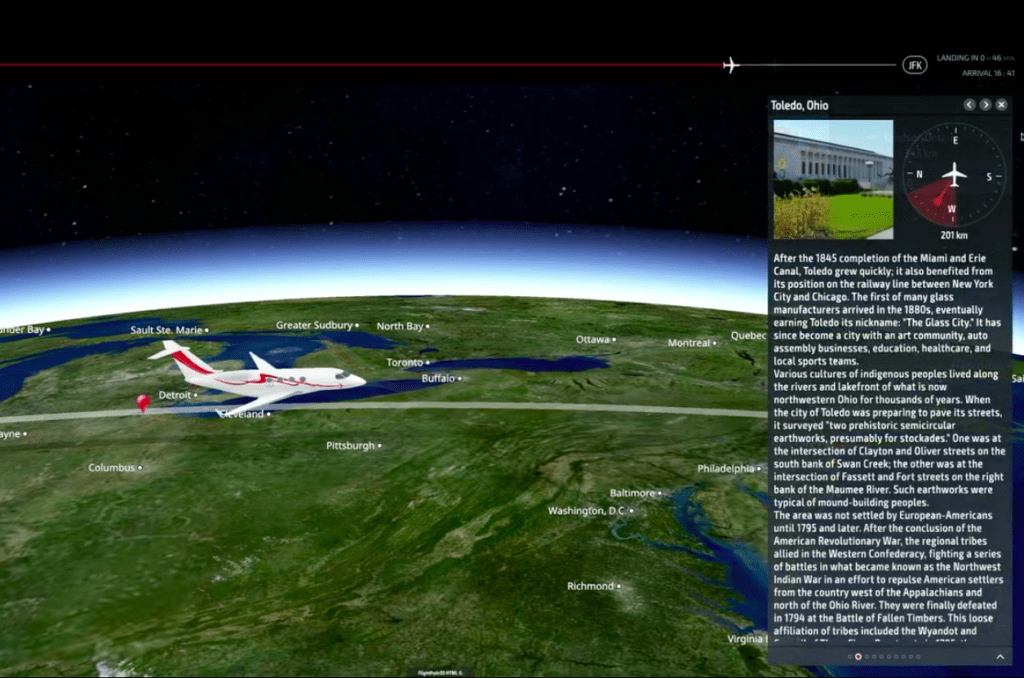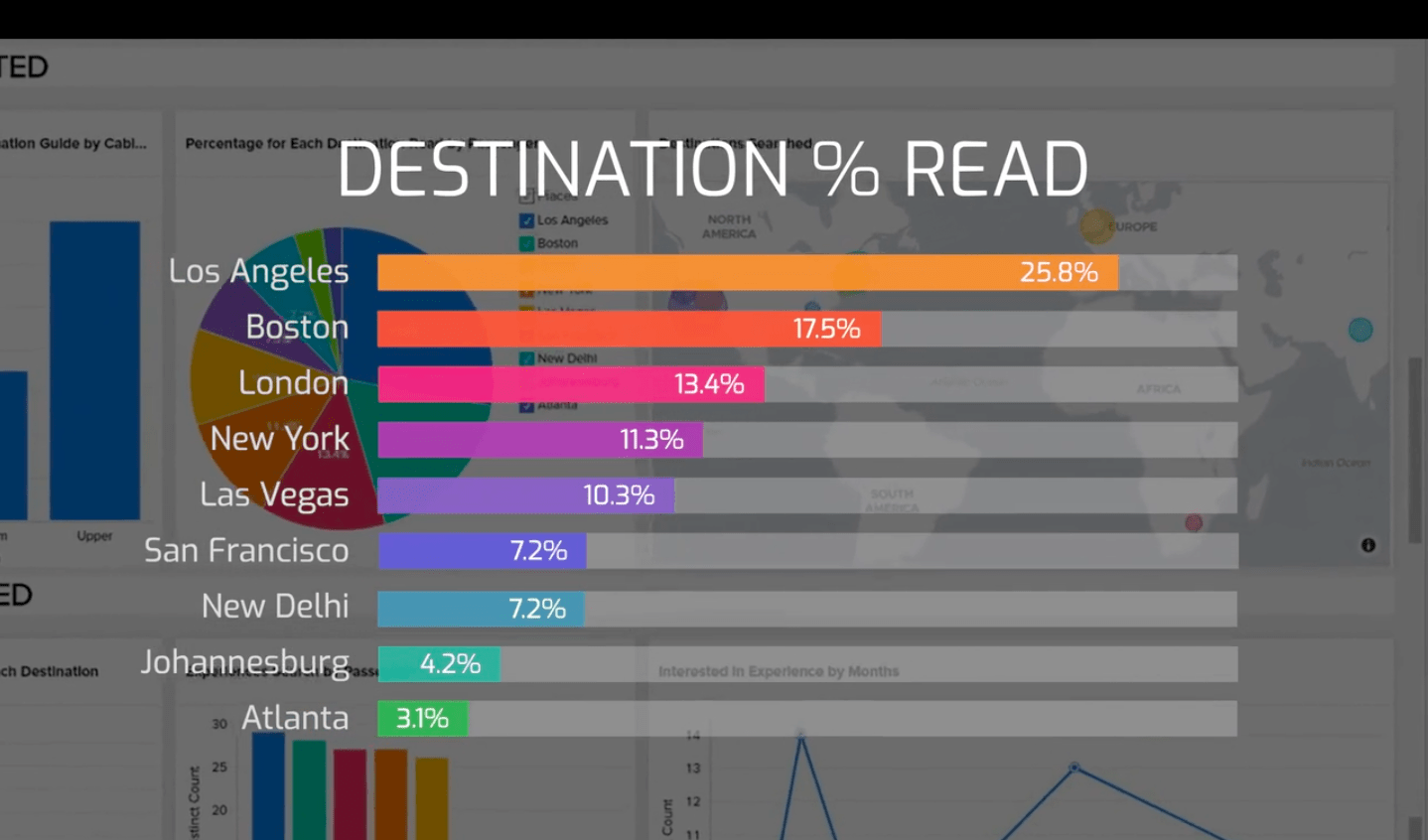4K, Fun Facts and Data Dashboard Come to FlightPath3D’s Moving Map
Share

FlightPath3D is building atop its popular moving map with higher resolution imagery and features to further enrich the in-flight entertainment experience, while increasing sponsorship revenue and analytics benefits for airlines.
When FlightPath3D learned one of its airline customers was installing 4K seatback screens, it saw an opportunity to get ahead of the curve and went to work on a higher resolution, crisper moving map that could offer the same satellite, window and cockpit views its customers already knew, but in finer detail.
“The hardware has moved faster than the content that’s available,” said Jon Norris, vice-president of Marketing, FlightPath3D, explaining that most in-flight entertainment content is still in HD or standard definition formats, even though 4K screens are gradually making their way on board. “We wanted to get there sooner rather than later.”
“Post-COVID-19, airlines will want to know where their passengers want to travel and when. We can gain this intelligence through the data dashboard.” – Jon Norris, FlightPath3D
FlightPath3D had hoped to launch its 4K upgrade, demonstrate two other features and make multiple customer announcements at Aircraft Interiors Expo earlier this month, but the event was canceled due to the coronavirus outbreak.
In addition to the native 4K moving map (different from lower-resolution maps that are scaled up to emulate 4K) the company is also introducing Flying Over Places. The feature, which is available on seatback and wireless IFE systems, adds educational and historical facts about more than 50,000 points of interest to the moving map. The information auto-plays as the flight progresses and tells passengers the aircraft’s distance from the different destinations. Norris sees potential here to feature sponsored points of interest, bringing additional revenue to airlines, as well as relevant promotions to passengers.
The added layer of information about destinations is further enriched by a new data dashboard. Airlines now have the option to access analytics about what content passengers are browsing within the moving map.

“The info they’re looking at can be really valuable to airlines,” said Norris, explaining it could help airlines decide which destinations to promote on certain routes through destination guides or indirect advertising. “Post-COVID-19, airlines will want to know where their passengers want to travel and when. We can gain this intelligence through the data dashboard,” he said. And integrated with a flight calendar, the moving map could further predict demand for certain destinations and which times of year a potential route would be popular.
Addressing the concern of data privacy, Norris says it’s up to airlines how they want to use the data which could center around individual passengers or the entire body on a particular flight or route. “We’re not prescribing this; we’re showing what’s available,” he said. “The real takeaway is the map-specific information. We have a long dwell-time so data can be captured,” Norris said, reminding us that the moving map is still one of the most watched items in the in-flight entertainment system.


